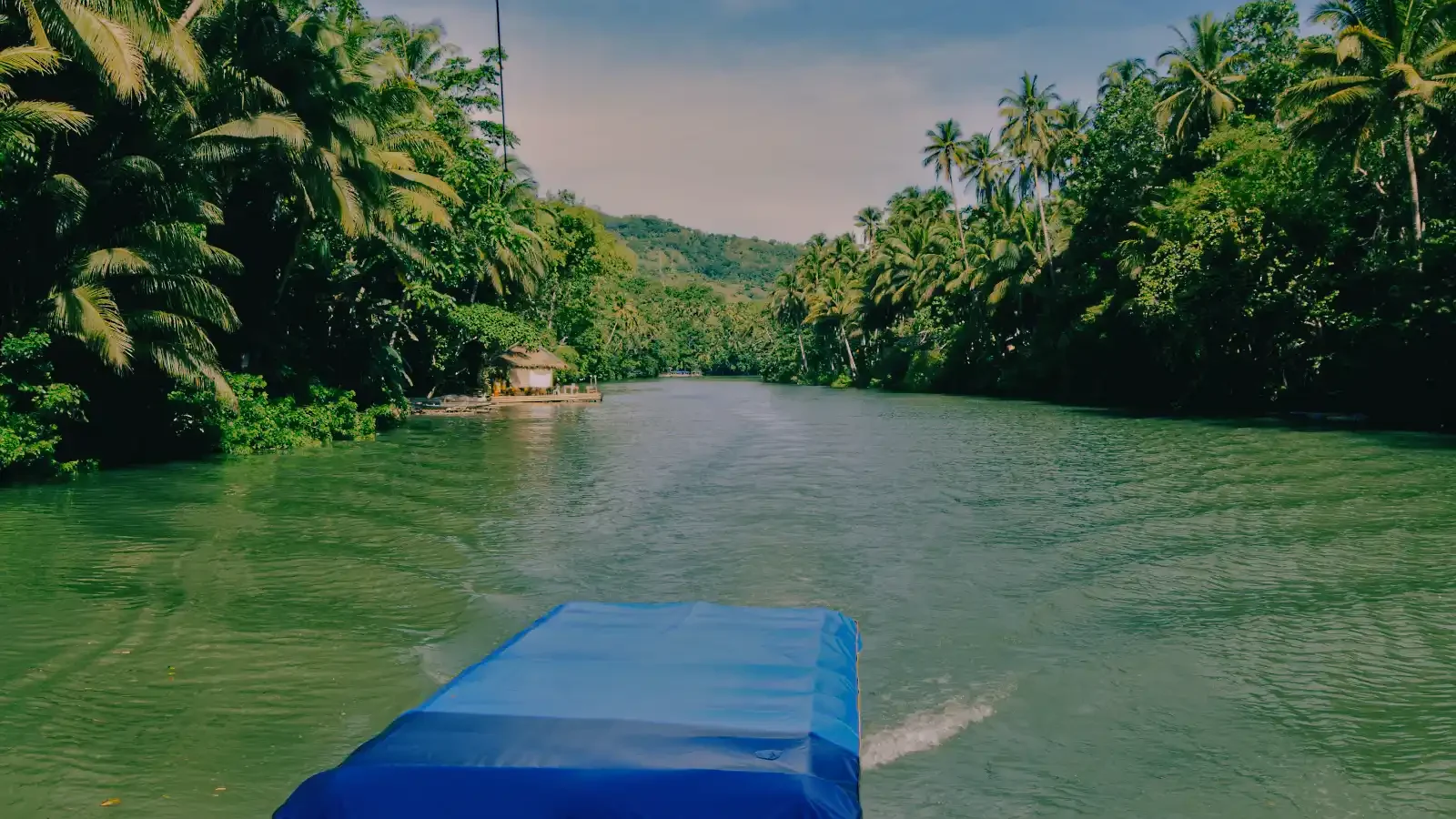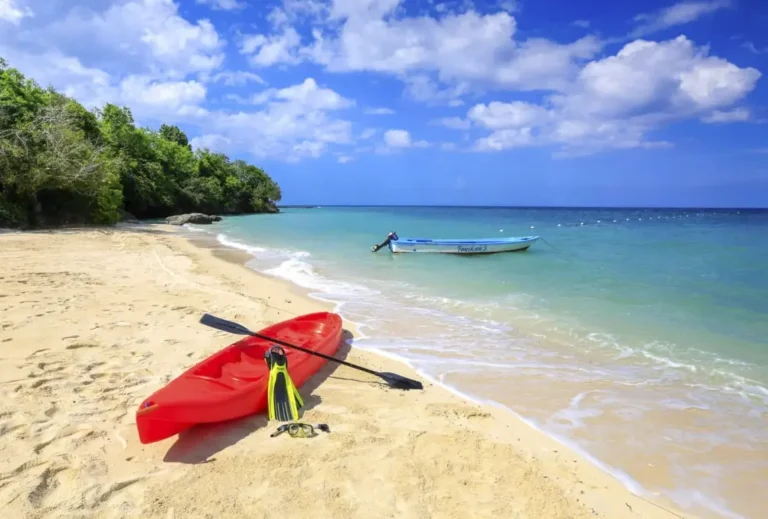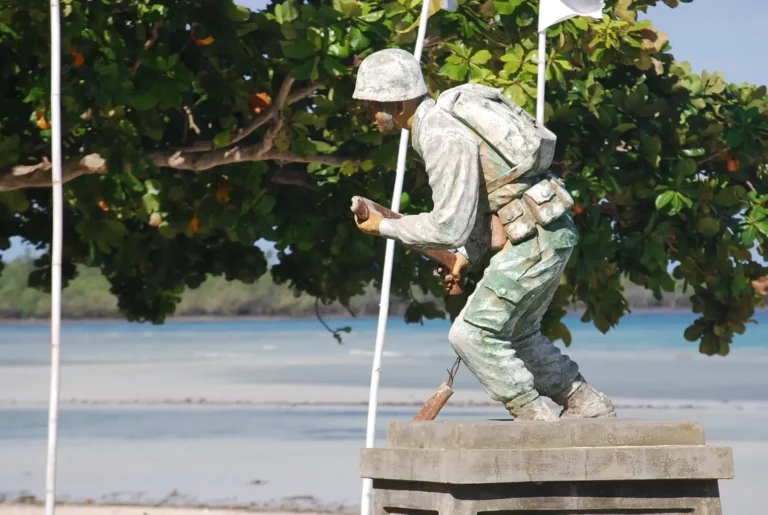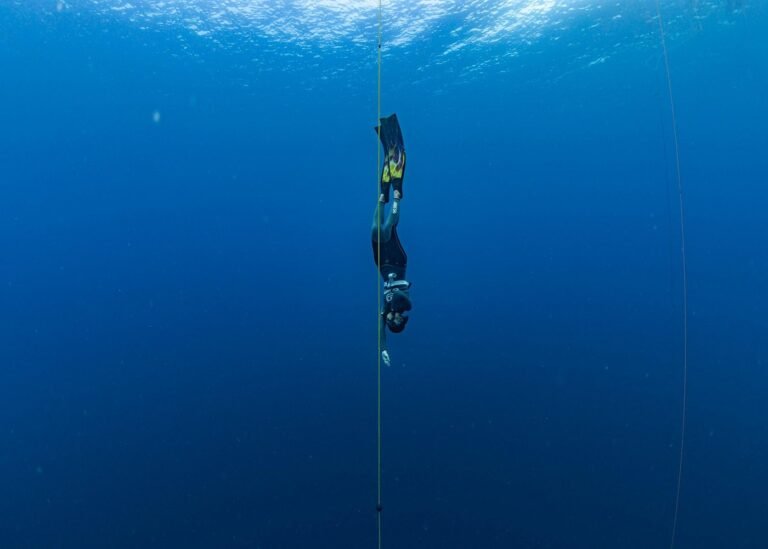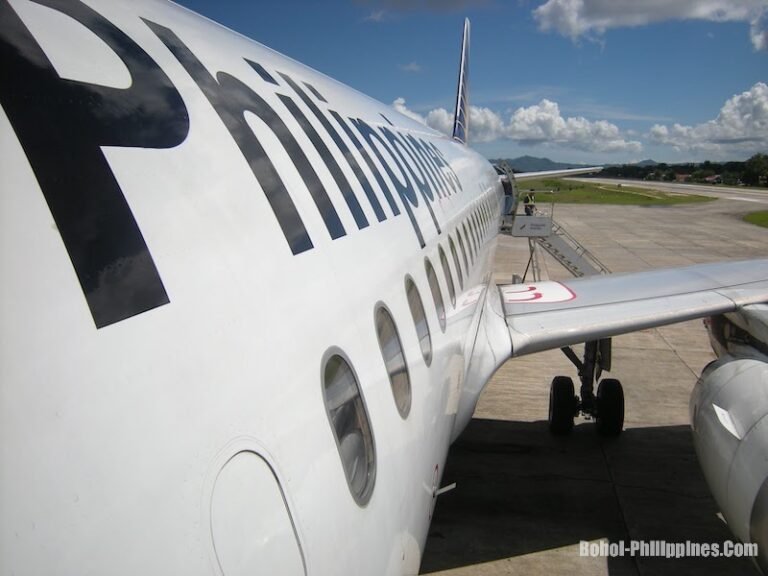Exploring Loboc River: Bohol’s Emerald Jewel
Where Nature Meets Culture
Picture this: you’re floating down a river so green it looks like liquid emeralds, surrounded by towering trees that form a natural cathedral above your head. The gentle sound of traditional Filipino music drifts across the water as you enjoy a delicious meal on a floating restaurant. This isn’t a dream – it’s the magical experience waiting for you at Loboc River in Bohol, Philippines.
Loboc River is more than just a beautiful waterway. It’s a living classroom where you can learn about geology, ecology, and Filipino culture all in one amazing trip. Whether you’re a nature lover, history buff, or just someone looking for a peaceful escape, this river has something special for you.
[Book on Klook] [Check Viator] [Browse GetYourGuide]
Why Loboc River Should Be on Your Must-Visit List
A Natural Wonder with Scientific Significance
Loboc River isn’t just pretty to look at – it’s a fascinating example of how nature creates and maintains freshwater ecosystems. The river’s famous emerald color comes from a combination of scientific factors that make it unique among Philippine waterways.
Perfect for Everyone
- Couples: Romantic sunset cruises with soft music and intimate dining
- Families: Safe, educational boat trips with cultural shows kids will love
- Students: Living science lessons about river ecosystems and geology
- Photographers: Instagram-worthy scenery at every turn
Unlike busy city rivers or crowded beach destinations, Loboc offers a peaceful, immersive experience where you can truly connect with nature and local culture. [Book on Klook] [Check Viator] [Browse GetYourGuide]
The Science Behind Loboc’s Beauty
Geography and Formation
Loboc River stretches approximately 24 kilometers from its source in Carmen town to where it meets the sea at Loay. But what makes this river system so special from a scientific perspective?
Limestone Bedrock: The river flows over a foundation of limestone rock, which was formed millions of years ago when this area was underwater. As ocean creatures died, their shells and skeletons accumulated on the sea floor, eventually becoming the limestone we see today.
Underground Spring System: The river is fed by numerous underground springs called “upsprings.” These springs work like natural water filters. Rainwater seeps through layers of soil and limestone, getting naturally purified before emerging as crystal-clear spring water.
[Book on Klook] [Check Viator] [Browse GetYourGuide]
The Emerald Color Mystery: Scientists have discovered that Loboc’s famous green color comes from three main factors:
- Mineral content from limestone rocks
- Microscopic algae that thrive in the nutrient-rich water
- Light reflection from the white limestone riverbed
Unique Ecosystem
The Loboc River supports a diverse ecosystem that scientists are still studying:
Plant Life: The riverbanks are home to over 50 species of trees, including native hardwoods like narra and mahogany. These trees prevent soil erosion and provide habitat for wildlife.
Aquatic Life: The river hosts freshwater fish species, freshwater crabs, and various aquatic insects that serve as indicators of water quality.
Wildlife: Keep your eyes open for kingfishers, herons, and fruit bats. The surrounding forest is also home to the endangered Philippine tarsier, though you’ll need to visit the nearby sanctuary to see them. [Book on Klook] [Check Viator] [Browse GetYourGuide]
The Ultimate Loboc River Cruise Experience
What to Expect on Your Floating Restaurant Adventure
The signature Loboc River experience is the floating restaurant cruise, and it’s unlike anything you’ll find elsewhere in the Philippines. Here’s what makes it special:
The Floating Restaurant: These aren’t just boats – they’re floating dining rooms complete with bamboo tables, comfortable seating, and live entertainment stages. The boats are powered by quiet electric motors that don’t disturb the wildlife.
Cultural Entertainment: Local musicians perform traditional Filipino folk songs and dances. You might hear the harana (traditional courtship songs) or see energetic tinikling (bamboo dance) performances.
Buffet Dining: Enjoy authentic Filipino cuisine including:
- Fresh grilled fish
- Adobo (Filipino braised pork or chicken)
- Vegetable dishes made with local ingredients
- Tropical fruits like mangoes and bananas
Best Time to Cruise:
- Morning (9-11 AM): Cooler temperatures, active wildlife
- Midday (12-2 PM): Best lighting for photos, fewer mosquitoes
- Late afternoon (3-5 PM): Golden hour lighting, chance of sunset views
Booking Your Cruise
For the best deals and most reliable service, we recommend checking out our partner tour operators who specialize in Bohol adventures. These experienced guides know the river’s secrets and can enhance your experience with local knowledge and stories.
[Book on Klook] [Check Viator] [Browse GetYourGuide] for exclusive tour packages that combine Loboc River with other must-see attractions like the Chocolate Hills and Tarsier Sanctuary!
Beyond the Cruise: Other Amazing River Activities
Adventure on the Water
Stand-Up Paddleboarding (SUP): For a more active experience, try SUP on the calmer sections of the river. It’s a great way to get close to the riverbank wildlife and test your balance skills.
Kayaking: Perfect for couples or small groups who want to explore at their own pace. Kayaking allows you to access smaller tributaries that bigger boats can’t reach.
Night Firefly Tours: One of nature’s most magical shows happens after dark when thousands of fireflies light up the mangrove trees like living Christmas lights. These bioluminescent insects use chemical reactions to create their glow – it’s like having a science class under the stars! [Book on Klook] [Check Viator] [Browse GetYourGuide]
The Famous Loboc Hanging Bridge
No visit to Loboc is complete without crossing the bamboo hanging bridge. This isn’t just a tourist attraction – it’s an example of traditional Filipino engineering.
Construction: The bridge is made from bamboo poles lashed together with natural fibers. Bamboo is actually stronger than many types of steel when measured by weight, making it perfect for suspension bridges.
History: The original bridge was a simple single-rope crossing used by locals. Today’s twin-bridge system was built for tourism but still uses traditional techniques passed down through generations.
Safety: Don’t worry – the bridge is regularly inspected and can safely hold the weight of many people at once. The gentle swaying is normal and part of the experience! [Book on Klook] [Check Viator] [Browse GetYourGuide]
Cultural and Historical Treasures
Loboc Church: Where History Meets Faith
The San Pedro Apostol Parish Church isn’t just a beautiful building – it’s a window into 400 years of Philippine history.
Jesuit Heritage: Built in 1602 by Spanish Jesuit missionaries, the church represents the meeting of European and Filipino cultures. The Jesuits chose this riverside location because it was easier to defend against pirate attacks than their previous church in Baclayon.
Architectural Features: The church combines Spanish colonial design with local materials and techniques. Notice how the thick stone walls were built to withstand earthquakes – a smart adaptation to local conditions.
Earthquake Damage and Restoration: The 2013 Bohol earthquake severely damaged the church’s facade, but restoration efforts are ongoing. This gives visitors a chance to see both historical architecture and modern preservation techniques in action. [Book on Klook] [Check Viator] [Browse GetYourGuide]
Local Legends and Folklore
Filipino culture is rich with stories that explain natural phenomena, and Loboc River has its share of magical tales:
River Spirits: Local elders tell of diwata (nature spirits) who guard the underground springs. According to legend, these spirits keep the water clean and punish those who pollute the river.
The Enchanted Women: Some stories speak of beautiful women who appear near the springs at dawn and dusk. They’re said to be guardians of the river’s secrets.
Baylan Traditions: The area was once home to baylan (shamans) who blended pre-Christian spiritual practices with Catholic beliefs. Some of these traditions continue today in local festivals and healing practices.
[Book on Klook] [Check Viator] [Browse GetYourGuide]
Scientific Conservation: Protecting Loboc’s Future
Environmental Challenges
Like many natural areas in the Philippines, Loboc River faces environmental pressures:
Water Quality: Increased tourism and development upstream can affect water quality. Scientists regularly monitor pH levels, oxygen content, and nutrient levels to ensure the ecosystem stays healthy.
Invasive Species: Non-native plants and fish can disrupt the natural balance. Conservation groups work to remove invasive species and protect native wildlife.
Climate Change: Changing rainfall patterns affect the river’s flow and temperature, which impacts the entire ecosystem.
[Book on Klook] [Check Viator] [Browse GetYourGuide]
How Tourism Helps Conservation
Responsible tourism actually helps protect Loboc River:
- Economic Incentive: When locals earn money from tourism, they have a strong reason to keep the river clean and beautiful
- Education: Visitors learn about conservation and often become advocates for environmental protection
- Funding: Tour fees help fund conservation programs and environmental monitoring
Practical Travel Information
Getting to Loboc River
From Tagbilaran City: 45-minute drive via well-maintained roads From Panglao Island: 1-hour drive through scenic countryside Transportation Options:
- Private van (most comfortable for groups)
- Motorcycle taxi (habal-habal) for adventurous solo travelers
- Public buses (most economical but takes longer)
Best Time to Visit
Dry Season (November-May):
- Pros: Clear skies, calm water, best photo conditions
- Cons: Higher prices, more crowds
Wet Season (June-October):
- Pros: Fewer tourists, lush green scenery, lower prices
- Cons: Possible rain delays, higher water levels
[Book on Klook] [Check Viator] [Browse GetYourGuide]
What to Pack
Essential Items:
- Hat and sunglasses (reflection from water intensifies sun)
- Biodegradable sunscreen (protects you and the river)
- Insect repellent (natural ingredients preferred)
- Waterproof phone case
- Motion sickness medication (just in case)
Photography Tips:
- Bring extra batteries (humidity drains them faster)
- Use polarizing filter to reduce water glare
- Golden hour (early morning/late afternoon) provides best lighting
[Book on Klook] [Check Viator] [Browse GetYourGuide]
Exploring More of Bohol and Cebu
Must-See Bohol Attractions
Your Loboc River adventure is just the beginning! Bohol offers incredible experiences for every type of traveler:
Chocolate Hills: Over 1,200 cone-shaped hills that turn brown during dry season – a geological wonder that scientists are still studying.
Philippine Tarsier Sanctuary: Meet the world’s smallest primate with eyes bigger than its brain! These nocturnal creatures are found nowhere else on Earth.
Bohol Bee Farm: Learn about sustainable agriculture and taste organic honey while enjoying ocean views.
Baclayon Church: One of the Philippines’ oldest stone churches, showcasing centuries of religious art and architecture.
[Book on Klook] [Check Viator] [Browse GetYourGuide]
For detailed itineraries, insider tips, and exclusive deals on Bohol tours, visit our comprehensive Bohol travel guide website. Our local experts have crafted perfect day trips and multi-day adventures!
Cebu Connection: Island-Hopping Adventures
Combine your Bohol trip with Cebu for the ultimate Philippine adventure:
Historical Cebu City: Walk in the footsteps of Magellan and Lapu-Lapu while exploring Spanish colonial architecture and vibrant local markets.
Oslob Whale Shark Experience: Swim with gentle giants in their natural habitat – an unforgettable wildlife encounter.
Siquijor Island Day Trip: Discover mystical waterfalls, ancient healing traditions, and pristine beaches on this enchanting island.
Temple of Leah: Marvel at this Roman-inspired temple offering panoramic views of Cebu City.
[Book on Klook] [Check Viator] [Browse GetYourGuide] Our Cebu travel website features comprehensive guides to hotels, restaurants, and activities, plus money-saving combo packages for Bohol-Cebu adventures!
Must-Do Activities: Your Loboc River Checklist
Essential Experiences
✅ Take the floating restaurant cruise – The classic Loboc experience everyone talks about
✅ Cross the hanging bridge – Get your Instagram shot and test your courage
✅ Try night firefly watching – Nature’s light show is truly magical
✅ Visit Loboc Church – Step into 400 years of Philippine history
✅ Sample local cuisine – Taste authentic Filipino flavors on the floating restaurant
For Adventure Seekers
✅ Go stand-up paddleboarding – See the river from a different perspective
✅ Explore by kayak – Access hidden corners only small boats can reach
✅ Take a photography workshop – Learn to capture the river’s beauty like a pro
For Science and Nature Lovers
✅ Study the limestone formations – See geology in action
✅ Bird watching tour – Spot kingfishers, herons, and tropical species
✅ Learn about the spring system – Understand how nature filters water
✅ Night sounds tour – Listen to the symphony of nocturnal wildlife
[Book on Klook] [Check Viator] [Browse GetYourGuide]
Planning Your Perfect Trip
Sample Itineraries
Day Trip from Panglao (8 hours):
- 8 AM: Depart hotel
- 9 AM: Arrive Loboc, morning cruise
- 11 AM: Hanging bridge and souvenir shopping
- 12 PM: Lunch cruise with cultural show
- 2 PM: Visit Loboc Church
- 3 PM: Return journey with stops for photos
- 5 PM: Arrive back at hotel
Overnight Loboc Experience:
- Day 1: Afternoon arrival, sunset cruise, firefly watching
- Day 2: Morning SUP or kayaking, church visit, lunch cruise, departure
[Book on Klook] [Check Viator] [Browse GetYourGuide]
Budget Planning
Budget Range (per person):
- Day cruise: ₱800-1,200 ($15-22 USD)
- SUP/Kayak rental: ₱500-800 ($9-15 USD)
- Firefly tour: ₱600-900 ($11-16 USD)
- Transportation from Panglao: ₱300-500 ($6-9 USD)
Money-Saving Tips:
- Book combo tours for better rates
- Visit during weekdays for lower prices
- Bring your own snacks and water
- Share transportation costs with other travelers
[Book on Klook] [Check Viator] [Browse GetYourGuide]
Responsible Tourism: Leave Only Footprints
How to Be an Eco-Friendly Visitor
Water Protection:
- Use only biodegradable soap and shampoo
- Never throw trash in the river
- Don’t feed fish or wildlife
- Choose tour operators committed to environmental protection
Cultural Respect:
- Dress modestly when visiting the church
- Listen respectfully during cultural performances
- Learn a few basic Filipino phrases
- Support local businesses and artisans
Photography Ethics:
- Ask permission before photographing local people
- Don’t use flash around wildlife
- Share positive images that promote conservation
[Book on Klook] [Check Viator] [Browse GetYourGuide]
Your Gateway to Philippine Adventure
Loboc River is more than a tourist destination – it’s a gateway to understanding the Philippines’ natural beauty, rich culture, and warm hospitality. Every moment spent on these emerald waters connects you to centuries of history and introduces you to an ecosystem that scientists and travelers alike find endlessly fascinating.
Whether you’re floating down the river while listening to traditional music, crossing the swaying bamboo bridge, or watching fireflies dance in the darkness, Loboc River creates memories that last a lifetime.
Ready to start planning? Our Bohol and Cebu travel websites offer everything you need:
- Detailed hotel reviews from budget-friendly inns to luxury resorts
- Restaurant guides featuring local favorites and hidden gems
- Money-saving tour packages combining multiple attractions
- Insider tips from local travel experts
- Real traveler reviews to help you make the best choices
Don’t just dream about the Philippines – experience it! Loboc River is waiting to share its secrets with you, and we’re here to make sure your adventure is everything you’ve imagined and more. [Book on Klook] [Check Viator] [Browse GetYourGuide]
Book early, travel responsibly, and prepare for the adventure of a lifetime in the heart of Bohol!

